A-2-562 Moose Creek Nike Site


Copied from the following publication
Technical Documentary Report AAL-TDR-62-33. Arctic Aeromedical Laboratory, Aerospace Medical Division, Air Force Systems Command, FortWainwright, Alaska. June 1962.
Chapter 8 Nike Hercules Deactivated
In the early Cold War years the United States recognized a grave Soviet threat in the form of intercontinental bombers. The prospect of long-range, high-speed planes entering U.S. territory to release nuclear weapons was a danger that demanded response. The Nike anti-aircraft guided missile system was developed to meet that threat. But as the Cold War continued, the Soviet Union redirected its efforts towards the development and acquisition of intercontinental ballistic missiles (ICBM's), launching its first test missile in 1957. In 1960 Soviet Premier Nikita Khrushchev famously stated that wars of the future would be fought by launching missiles deep into a country's territory. The same year he cut 1.2 million soldiers from the conventional Soviet forces to direct resources towards the Strategic Rocket Forces.
Even as Nike sites were being deployed across the country, the U.S. government recognized that Soviet strategies were shifting. A 1960 National Security Council discussion paper stated, "Soviet delivery systems for attack on the continental United States are changing importantly in character. The period of the early 1960s will represent a gradual transition from a largely bomber threat to mainly one composed of ICBMs." Though the threat was changing, it was still determined necessary to retain the Nike system as long as the Soviets still possessed long range bombers.
The Department of Defense began devoting substantial resources towards the development of antiballistic missile (ABM) defense systems in the late 1950s. By the mid 1970s, the threat from intercontinental bombers had been almost entirely replaced by the threat of ICBMs. And protection against an ICBM attack became the chief U.S. security concern.
This
evolving threat along with budget constraints and a dearth of manpower caused by the Vietnam War all contributed to the closure of the Nike Hercules system throughout the 1970s. Sites across the country were largely deactivated in two phases, with roughly half the batteries closing in 1970/71, and the remainder closing in 1974/75. The Fairbanks Nike batteries were deactivated in 1970 and 1971 due to budgetary constraints. The deactivations were part of nationwide closures involving twenty-seven firing batteries in fifteen states, the ARADCOM second Regional Headquarters at Selfridge AFB, and two Air Defense Group Headquarters. One firing unit of the double battery at Site Point was also closed to reduce expenditures in 1970.
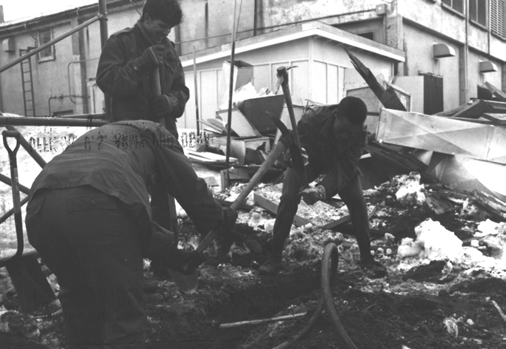
Figure 52:
Soldiers of B Battery, Site Summit, dig up radar cables during battery closure in May, 1979. U.S. Army Photo.The Department of the Army was actually considering deactivating the Anchorage Nike Battalion as early as 1972. According to Army records, "Since [that] time, persistent rumors concerning the battalions future here in Alaska have always been present and created instability and uncertainty among soldiers assigned or alerted for assignment to the battalion." NORAD considered the battalion necessary and it remained operational until 1979.
After 1975, Alaska and Florida were the only states in the country with operational Nike sites. The likely reason for this was their proximity to the Soviet Union and Cuba. By the late 1970s, however, the utility of the Nike system was greatly diminished. Just as technological advancements had once made anti-aircraft artillery ineffective, the same situation now faced Nike missile sites.
The decision to close the Anchorage Nike batteries was made in March of 1979. Mission relief was granted on April 9, and by July of 1979 all equipment and sensitive technology was removed from the three sites. Closing and inactivating the Nike batteries was a sizeable job requiring careful planning and execution. In particular, the removal of the missiles and warheads was an extremely sensitive operation. The battalion turned in over $100 million worth of equipment. The HIPAR radomes and towers from B and C battery were sold to a foreign country. Guard dogs were sent to Lackland Air Force Base, Texas. The only valuable equipment left on the sites were the 250 kW generators, which were deemed too large and expensive for removal. Initially, Site Point and Site Bay were guarded for protection against trespassers and vandalism. Site Summit, the only site within the boundaries of Fort Richardson, was locked and left unguarded.
The closure of Anchorage's Nike sites received considerable media attention. An inactivation parade was conducted at Fort Richardson on July 30, 1979. Individual awards were presented to soldiers, and the Battalion colors were retired. The Air Force presented the Battalion with an Air Force Outstanding Unit Award for service to the Alaskan NORAD region. Within just four short months of the inactivation order, Alaska Nike Hercules operations came to an end. The closure of the Nike system affected over 700 people associated with running and maintaining the sites - all had to be reassigned or released from the Army. Two thirds of the servicemen were transferred out of Alaska.
Current Status of Sites
Alaska Nike batteries experienced a varied end after decommissioning in the early and late 1970s. Uniformly, however, site abandonment has resulted in the steady deterioration of the buildings. Structures that were adapted for reuse, particularly some of the concrete launch buildings, survived in better condition. Though the original character of these buildings is often still apparent, the historic integrity is questionable.
The Fairbanks batteries were left unguarded after deactivation and immediately suffered from vandalism and scavenging. Sites Jig and Love were demolished under the Defense Environmental Restoration Account Program in 1986. The battery control facilities at Site Tare were demolished in the 1980s. The launch area was taken over by the U.S. Army Corps of Engineers during construction of the Chena River Flood Control Project. Today, one launch building remains in good condition and is used by the Corps for maintenance and storage. A warhead storage igloo is also still standing, and is used for boat storage. The second launch building is leased to the Fairbanks North Star Borough for the Chena Lakes Recreation Area. It is also used for storage and maintenance. Sites Peter and Mike, the only two Fairbanks batteries still on military land, were heavily vandalized and then damaged by military training after being deactivated in 1970 and 1971. The remains of the batteries are scheduled for final demolition in 2004.

Figure 53:
Launch building at former Site Tare, Fairbanks. Now used by Fairbanks North Star Borough for maintenance and storage. June 2004.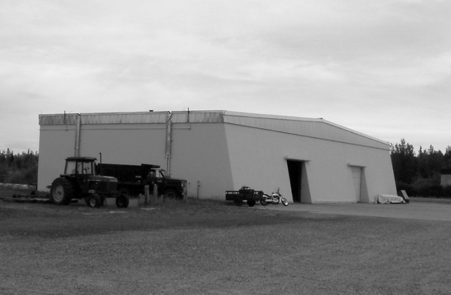
Figure 54:
2nd Launch building at former Site Tare, Fairbanks. Used by Corps of Engineers. June 2004.
The Anchorage Nike sites were temporarily guarded after the battalion was deactivated in 1979, and were initially in better condition than their northern counterparts. Currently only Site Summit remains under Army control, and it is the only site sufficiently intact to retain historic integrity. Integrity is threatened by vandalism and weather deterioration, which have taken a heavy toll on the facilities. Site Summit is listed in the National Register of Historic Places.
The Battery Control facilities at Site Bay were transferred to the Alaska Department of Corrections (ADC) in 1983 and converted to a minimum-security correctional center. The prison operated from 1983 to 1986, until asbestos was discovered in the buildings and the prison was forced to close. The ADC continued using the facilities for training until 1989. The University of Alaska obtained the launch area and surrounding lands.
Site Point was transferred to the Anchorage Municipality in 1982 for a park, now known as Kincaid. The IFC area at the dual site was demolished, but most of the launch area buildings remain. One launch structure was renovated for use as a ski warm up facility and the other three are used for storage. The warhead storage igloo, two ammunition storage bunkers, and one launch control building also remain. (See appendix B). The structures are in good condition, and because the battery was a dual site, almost one complete launch area remains with only the dog kennels, fencing, guard shacks, and vehicle/storage building absent. This highly accessible site has excellent potential for historic interpretation. Many of the buildings are in better or equivalent condition to their counterparts at Site Summit launch area. (Photos 56-66)
At one time 145 Nike Hercules batteries dotted the U.S. landscape, surrounding important cities, military instillations and industrial centers. Twenty-five years following deactivation of the last operable sites in Alaska and Florida, traces remain to remind the public of the remarkable Nike mission, though they are often incomplete and invisible to the uninformed. One site in San Francisco, SF-88, is being restored for guided tours. Many other sites have been demolished or adaptively reused for diverse purposes, from a vocational school to a munitions storage site. The Nike structures that remain are a reminder of the Cold War and the threat which the Army and thousands of U.S. soldiers prepared to meet.
For twenty years Alaska's Nike sites were manned and maintained around the clock to provide defensive cover for the country. The overall dedication and hard work by everyone involved in operating the system made a lasting impression on many. As Phillip Parks of Site Point remembered, "the guys were dedicated" Some of them put in lots and lots of hours, gave up lots of free time to make things work." Intelligence Officer Jackson Murray stated, "I think they did an outstanding job." Billy Badger reflected, "we really had the best people we could get working on it. Those people really put their all into it. They wanted to do well and they did well."
The Fairbanks batteries were left unguarded after deactivation and immediately suffered from vandalism and scavenging. Sites Jig and Love were demolished under the Defense Environmental Restoration Account Program in 1986. The battery control facilities at Site Tare were demolished in the 1980s. The launch area was taken over by the U.S. Army Corps of Engineers during construction of the Chena River Flood Control Project. Today, one launch building remains in good condition and is used by the Corps for maintenance and storage. A warhead storage igloo is also still standing, and is used for boat storage. The second launch building is leased to the Fairbanks North Star Borough for the Chena Lakes Recreation Area. It is also used for storage and maintenance. Sites Peter and Mike, the only two Fairbanks batteries still on military land, were heavily vandalized and then damaged by military training after being deactivated in 1970 and 1971. The remains of the batteries are scheduled for final demolition in 2004.
The Anchorage Nike sites were temporarily guarded after the battalion was deactivated in 1979, and were initially in better condition than their northern counterparts. Currently only Site Summit remains under Army control, and it is the only site sufficiently intact to retain historic integrity. Integrity is threatened by vandalism and weather deterioration, which have taken a heavy toll on the facilities. Site Summit is listed in the National Register of Historic Places.
The Battery Control facilities at Site Bay were transferred to the Alaska Department of Corrections (ADC) in 1983 and converted to a minimum-security correctional center. The prison operated from 1983 to 1986, until asbestos was discovered in the buildings and the prison was forced to close. The ADC continued using the facilities for training until 1989. The University of Alaska obtained the launch area and surrounding lands.
Site Point was transferred to the Anchorage Municipality in 1982 for a park, now known as Kincaid. The IFC area at the dual site was demolished, but most of the launch area buildings remain. One launch structure was renovated for use as a ski warm up facility and the other three are used for storage. The warhead storage igloo, two ammunition storage bunkers, and one launch control building also remain. (See appendix B). The structures are in good condition, and because the battery was a dual site, almost one complete launch area remains with only the dog kennels, fencing, guard shacks, and vehicle/storage building absent. This highly accessible site has excellent potential for historic interpretation. Many of the buildings are in better or equivalent condition to their counterparts at Site Summit launch area. (Photos 56-66)

Figure 55:
Converted launch building, Site Point, Kincaid Park. May 2004
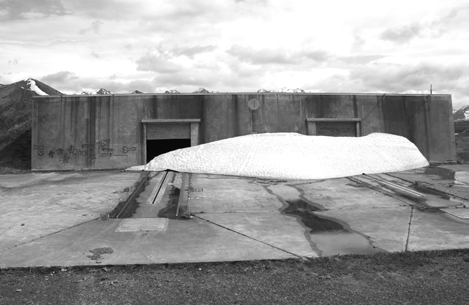
Figure 56: Site Summit, launch building. June 2004.

Figure 57: Site Point,
launch building. May 2004.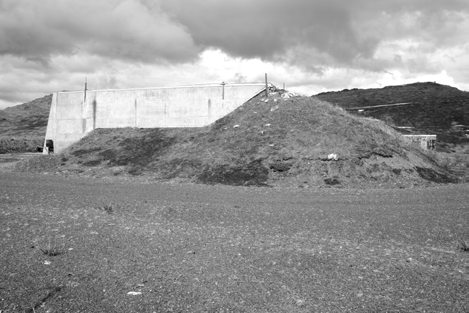
Figure 58: Site Summit.
Side elevation of launch building. June 2004.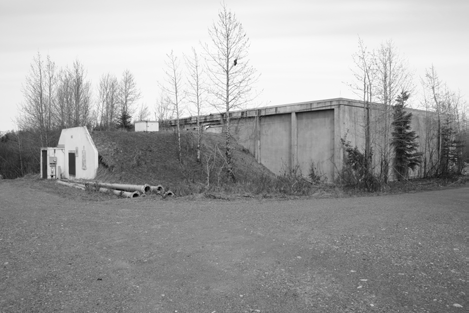
Figure 59: Site Point.
Side elevation of launch building. May 2004.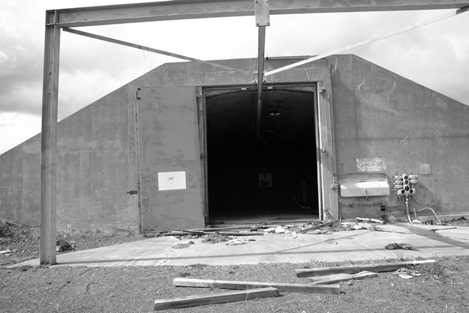
Figure 60: Site Summit.
Warhead storage. June 2004.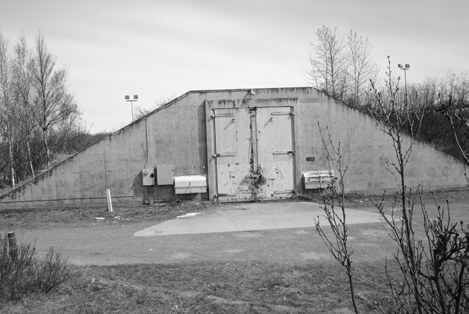
Figure 61: Site Point.
Warhead storage. May 2004.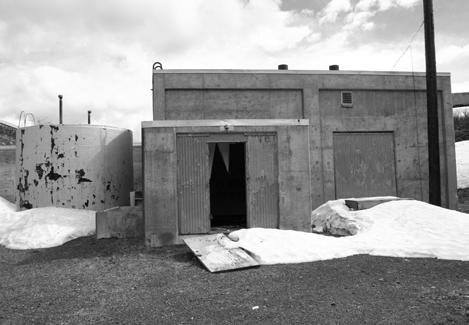
Figure 62: Site Summit.
Launch control building, side elevation. June 2004.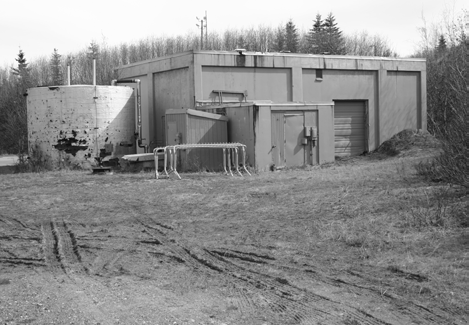
Figure 63: Site Point.
Launch control building, rear elevation. May 2004.
Figure 64: Site Summit.
Launch control building. June 2004.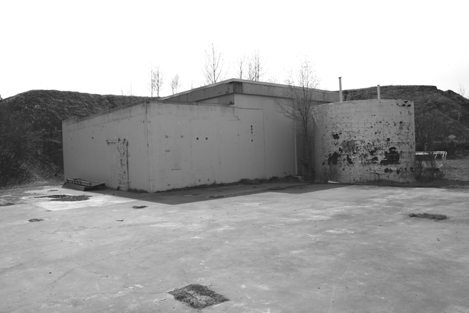
Figure 65: Site Point.
Launch control building. May 2004.
Figure 66: Site Summit
, 2003. Battery Control Building.